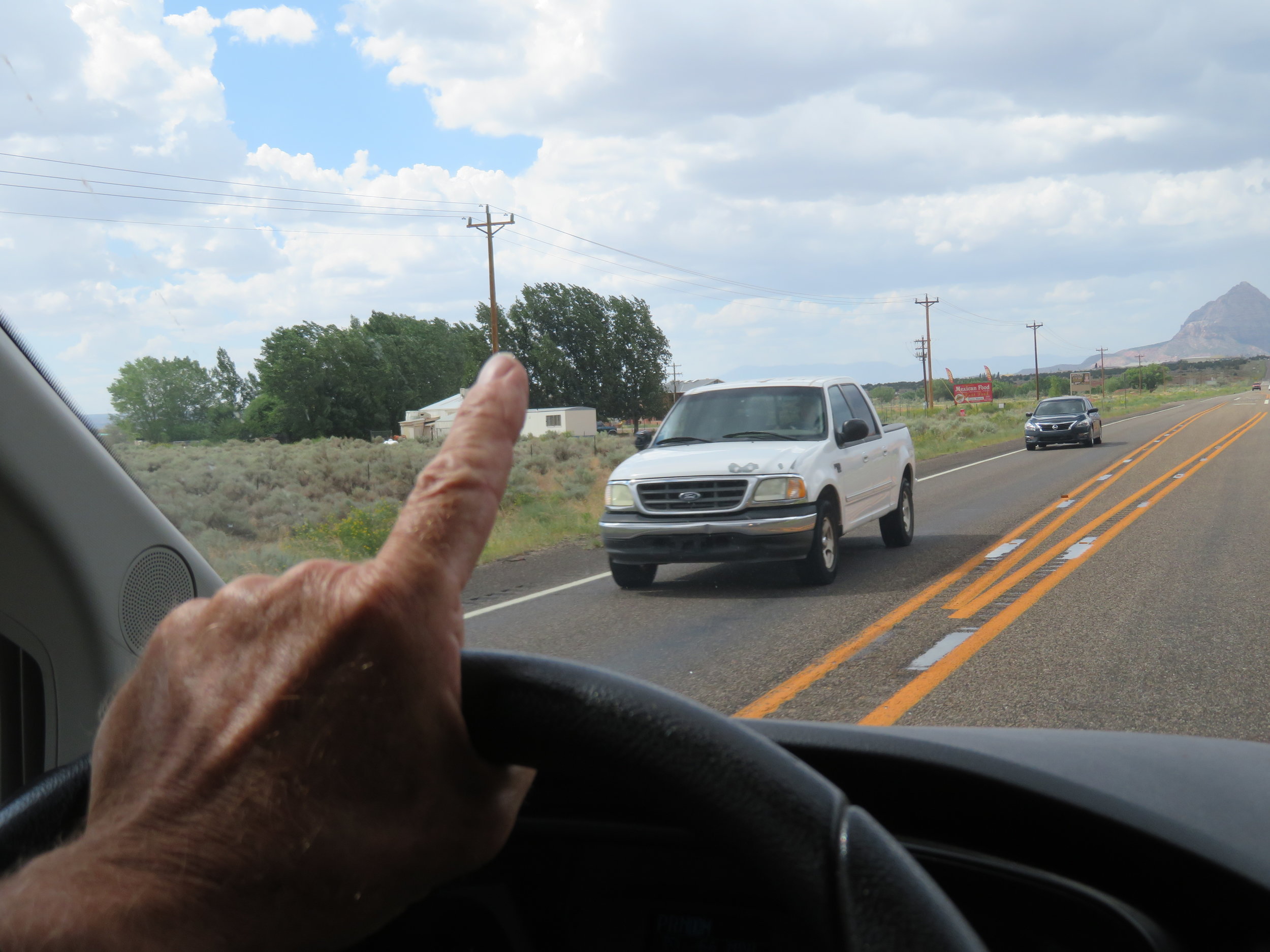Blue View – Driving Styles
/A British double decker
As I watch the taxis, doubledecker buses and lorries navigate the congested, narrow roads here in England, I am reminded of how differently people drive in various parts of the world. Even in the U.S., driving styles vary greatly in different areas of the country. For example, when driving in the Boston area, if you aren't doing at least ten over the speed limit, you can be sure to have a steady stream of cars flying past, honking and giving you the finger as they pass. On the other hand, drivers in northern Minnesota and western Colorado seem to think the speed limit is the point at which your car will likely explode or certainly fly off the road into the trees, and should only be approached in the direst of emergencies.
A properly executed wave
The two fingered variation
I really like the way drivers salute each other on two lane highways in many of the rural areas of our country. Depending on where you are, it's a wave using either the index finger or the index and middle finger. To properly execute it, the left hand must be draped over the steering wheel while the right hand lies across the top of the seat alongside (which is a lot easier in a pickup with bench seats than it is with bucket seats, BTW). As another vehicle approaches, maintain a cool, stoic expression as you look the other driver in the eye and subtly raise the finger or fingers. It's better if you're wearing a cowboy hat or John Deere hat, but even a bald, old guy with no hat, like me for example, can do this acceptably.
Drivers in many South American countries have a whole different philosophy of driving than we do. There, the unexpected is always expected, and the drivers drive much more defensively. It's not unusual to see two oncoming trucks passing each other on a two lane road. No one sweats it – everyone squeezes together enough to make it into a temporary three lane road – and who really needs their side view mirrors anyway. I suspect it might be a little bit of a problem if there are two sets of trucks passing each other, however.
We also noted that the most important part of a car in most South American countries is the horn. The tires may be threadbare, the doors might be missing, and the windshield totally crazed – but none of these would phase a driver there. No one, however, would consider driving a car that didn't have a working horn. There is a complete horn vocabulary as well. Depending on the number and length of the blasts, the horn can signal any of the following:
Hi
Bye
What a nice day
What a nice ass
I'm late for an appointment and will be running the red light
I'll be making a u-turn across all four lanes of oncoming traffic
I'll be stopping my taxi right here in the inside lane, waiting for my fare to cross the three lanes of traffic
I'm approaching the crosswalk at 70 mph – jump right
I'm approaching the crosswalk at 70 mph – jump left (You don't want to get these two mixed up!)
This is a horn check - I haven't honked my horn in at least 30 seconds
One of the most interesting places we've ever driven was on St. Helena Island in the South Atlantic. It is a British Overseas Territory, so, just as in Britain, you drive on the left side. The roads are narrow and steep with switchbacks and blind curves everywhere. The local road maps are confusing. They don't show all the roads, aren't quite to scale, and since many roads don't have signs, we were often not quite sure as to where we were or which fork to take. I suppose some people would refer to this as being lost, but I think that is far too strong a term. The maximum speed limit on the island is 30 MPH. I thought of it as more of a goal than a limit – in four days of driving, I don't think I ever found a stretch of road on which I could go that fast. I did a blog while we were there that provided several tips for driving on the island if you are interested in more information.
Then, there’s my style of driving. Now that I’m 70, I’m trying to adapt some of the old guy defensive driving techniques. I think I can manage driving in the passing lane at 10 mph under the speed limit, and I don’t think I’ll have a problem signalling my lane changes two miles before and 20 miles after I actually change lanes … being sure to check my mirrors carefully AFTER I’ve made my move. I’m also working on my ‘split-minute’ reflexes and decision-making processes — ‘So why are all those twits honking at me like I did something wrong? Oh, was that a red light?’
I still haven’t shrunk enough to look through the steering wheel rather than over it, however, but I’m hopeful that I’ll still be driving in a decade or two, so there’s ample time to work on that technique.





